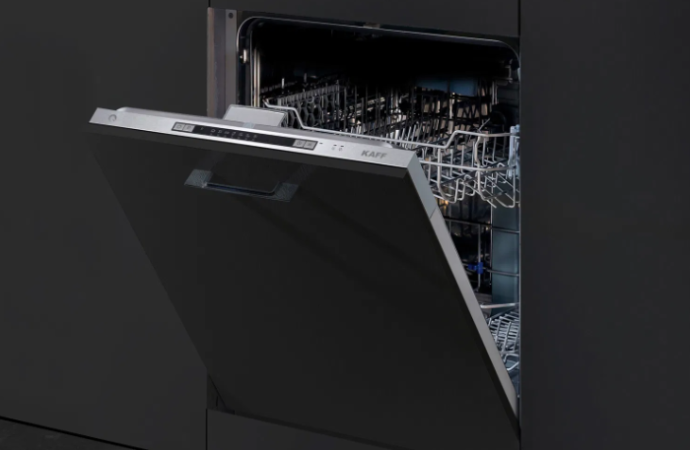Introduction Come on, let us face it, dishes are not fun to wash. No one likes to spend time cleaning dirty dishes and greasy pots after cooking and eating. It is where a dishwasher can assist. It is not for fancy kitchens only, it is a handy device that saves time and makes everything clean.
Introduction
Come on, let us face it, dishes are not fun to wash. No one likes to spend time cleaning dirty dishes and greasy pots after cooking and eating. It is where a dishwasher can assist. It is not for fancy kitchens only, it is a handy device that saves time and makes everything clean.
In India, many families wonder if a dishwasher is right for them. Will it clean spicy food stains? What about pressure cookers? Is it too expensive? This guide will show you step-by-step how to use a dishwasher the right way—from loading to drying. It’s easier than you think!
Step-by-Step: How to Use a Dishwasher
1. Get the Dishes Ready
Before putting dishes into the dishwasher, scrape off leftover food into the bin. There’s no need to rinse them. Modern dishwashers are strong enough to clean small bits of food. Too much rinsing can actually stop the detergent from working properly.
If a dish is very oily, just give it a quick wipe with a napkin. You can also run a short rinse cycle if you’re not washing right away.
2. Load the Dishwasher Properly
How you place things inside the dishwasher is important. It helps everything get clean and dry. Here’s how to do it:
- Plates: Stand them up in the bottom rack, facing the middle.
- Big pots and pans: Put them at the back or sides of the bottom rack.
- Bowls: Place them in the top rack, facing down.
- Glasses and cups: Keep them on the top rack, with space between them.
- Spoons and forks: Use the basket. Mix them up so they don’t stick together. Put sharp knives with the handle up.
Don’t stuff too many things in. The water and air need space to move around.
3. Use the Right Detergent
You can use tablets, powder, or gel in your dishwasher. Tablets are easy to use and often include rinse aid. Gels let you decide how much to use. Powders are cheaper and easy to store.
Always use rinse aid. It helps stop watermarks and makes drying faster. If your dishwasher has a refill light, keep an eye on it.
4. Pick the Right Wash Cycle
Not all dishes need the same type of wash. Choose the best setting:
- Quick Wash: For slightly dirty dishes.
- Eco Mode: Saves water and power—great for everyday use.
- Heavy Wash: Best for greasy pots and Indian cooking.
- Glassware: Gentle for breakable things.
- Auto Mode: Some machines choose the best setting for you.
Try different cycles to see what works best for your dishes.
5. Drying Tips
After washing, dishes need to dry. Most dishwashers dry them with heat or fans. You can help by doing this:
- Use rinse aid.
- Open the door a little when the cycle ends to let out steam.
- Take out the bottom rack first so the water from the top doesn’t drip on it.
- If you’re washing at night, let them dry overnight.
Tips for Indian-Style Cooking
Indian food can be oily and full of spices, which can make cleaning harder. But your dishwasher can handle it with the right steps:
- Masala stains: Use the heavy wash cycle. Don’t let the food dry on dishes.
- Stainless steel: It’s usually safe, but don’t put it next to non-stick items.
- Kadais and pressure cookers: Only put them in if they say dishwasher-safe. Don’t include rubber rings or whistles.
- Plastic containers: Use the top rack only, with a low heat setting.
- Keep it clean: Clean the filter once a week. Check the spray arms. Run a cleaner cycle once a month.
Also, keep the door slightly open after a wash so it doesn’t smell.
Myths About Dishwashers: Busted!
Let’s clear up some common misunderstandings:
1. Myths:“Dishwashers use too much water.”
Not true! A dishwasher uses much less water than handwashing.
2. Myths: “Dishwashers need a lot of electricity.”
Today’s dishwashers are smart and save energy. Use eco mode to save more.
3. Myths: “The dishwasher price in India is too high.”
There are many options now. The dishwasher price is much more affordable than before. Plus, it saves time and water.
4. Myths: “Dishwashers don’t work for Indian food.”
Modern dishwashers are made to clean oily, spicy, and sticky foods. They work great if used correctly.
Things to Check Before You Buy One
If you’re planning to buy a dishwasher, here’s what to look at:
- Size: A 12–15 place setting dishwasher is good for most Indian families.
- Noise: Quieter machines are better, especially in small homes.
- Modes: More cycles mean more ways to clean.
- Adjustable racks: Help you fit big items like pressure cookers.
- Energy use: Choose energy-saving models.
- Service and warranty: Pick a brand with good support.
Also, it’s helpful to understand the dishwasher machine price range. Prices vary based on size, features, and brand, so there’s something for every budget.
Try It: You’ll Love It!
Using a dishwasher is easy once you get the hang of it. You’ll save time, use less water, and enjoy a cleaner kitchen. It can be a daily habit that makes life easier.
Soon, you’ll wonder how you lived without one. You’ll spend less time washing and more time doing things you enjoy.
With more families choosing smarter kitchens, brands like KAFF offer a range of dishwashers designed for Indian homes. They’re stylish, powerful, and come at practical prices.
So go ahead, give it a try—and let your dishwasher do the hard work!
Read more at Truegazette
















